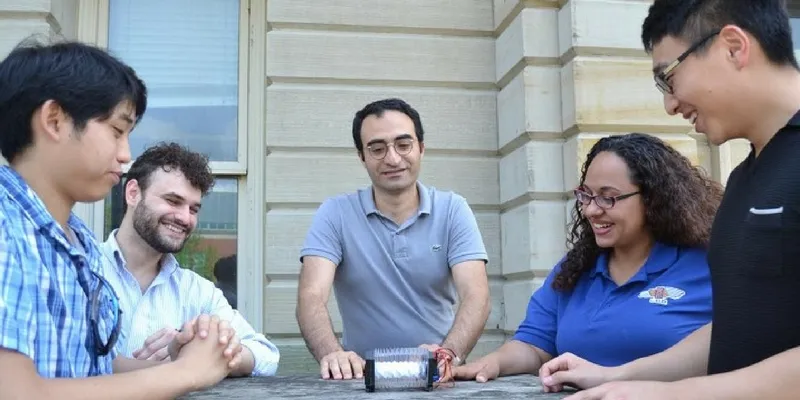US scientist creates low-cost crawling robot using origami technique
Sameh Tawfick and a group of researchers from the University of Illinois have created a low-cost crawling robot using the Japanese paper-folding technique known as origami.

This innovation has been inspired by movements such as those of the Venus flytrap and the swimming of uni-flagellated bacteria. The common aspect is the manner in which the body’s flexibility is utilised, thus, allowing rapid movement while preserving energy.
Sameh is an assistant professor of mechanical science and engineering at the University of Illinois. His research interest lies in subjects such as nanomechanics and nanomanufacturing.
According to The Indian Express, while talking about this project, Sameh said,
The robot uses origami building blocks to mimic the gait and metameric properties of earthworms and directional material design to mimic the function of the setae on earthworms that prevents backward slipping.
The researchers investigated origami’s Kresling crease pattern, a chiral tower with polygonal base, for this project. The origami tower's expansion and contraction is coupled with longitudinal and rotational movements.
The robot can move forward as well as left or right with the help of repeated expansion and contraction. According to India Today, the researchers said,
The ability to produce a functional and geometrically complex 3D mechanical system from a flat sheet introduces exciting opportunities in the field of robotics for remote, autonomously deployable systems or low-cost integrated locomotion.
The idea of using virtual folds to analyse panel bending in snapping Kresling-like origami towers is said to be the first of its kind. The design helps conserve energy and simplifies the open-loop locomotion control.
Do you have an interesting story to share? Please write to us at tci@yourstory.com. To stay updated with more positive news, please connect with us on Facebook and Twitter.







